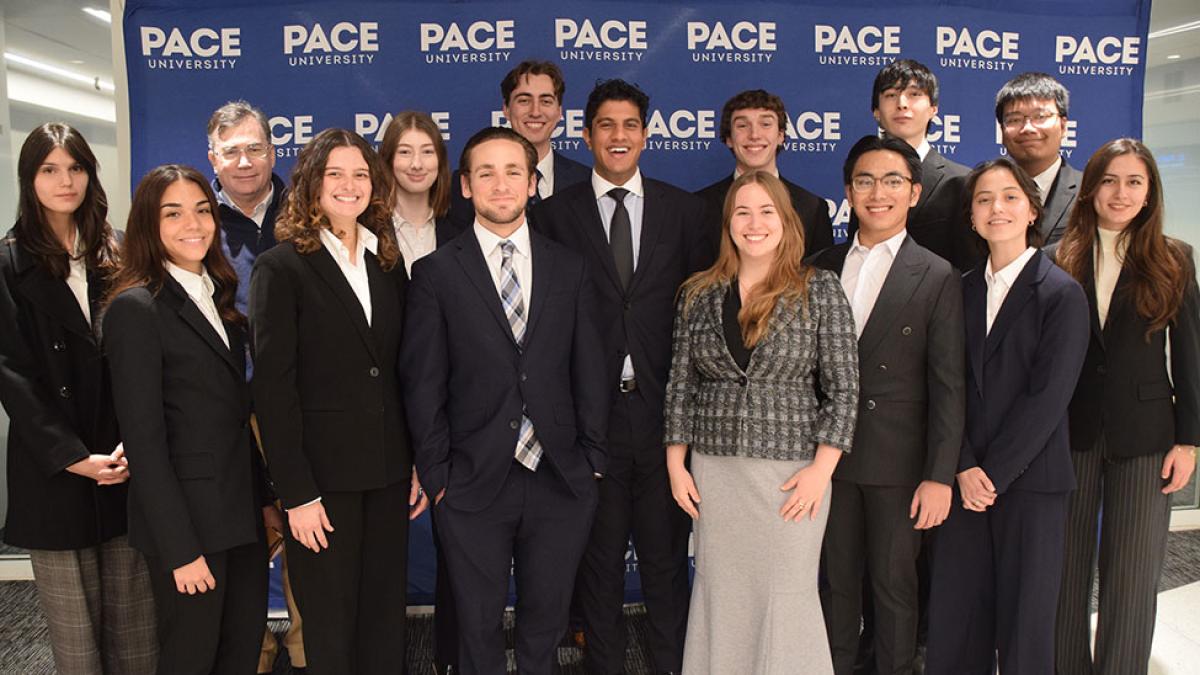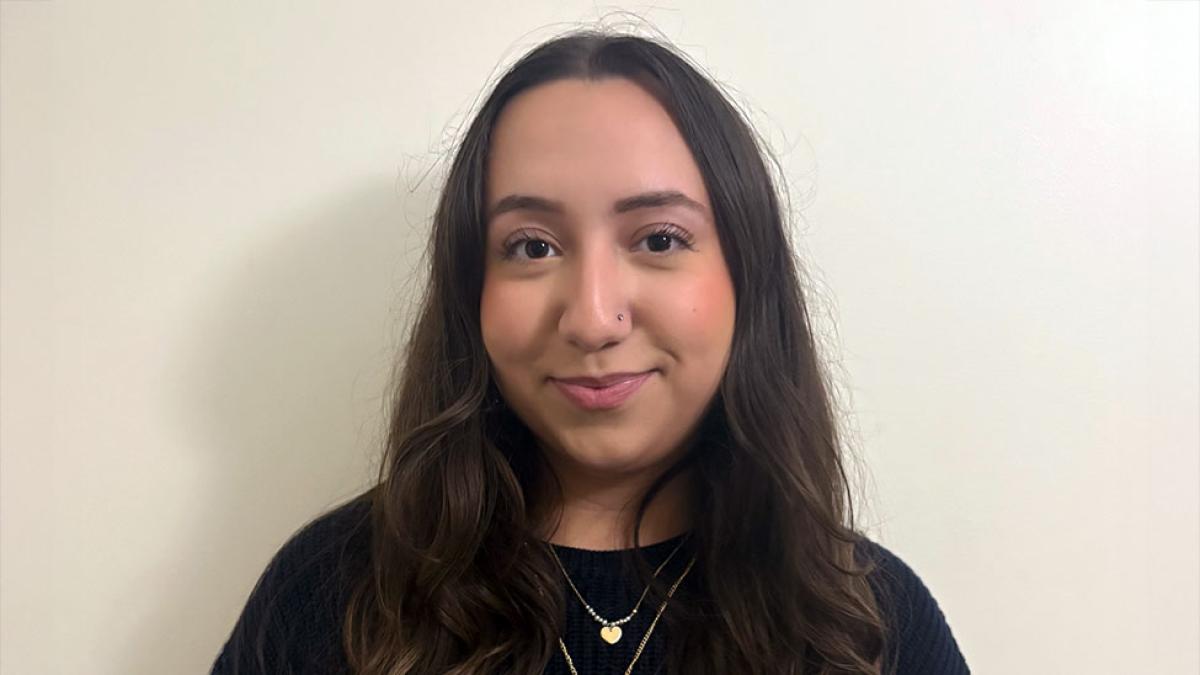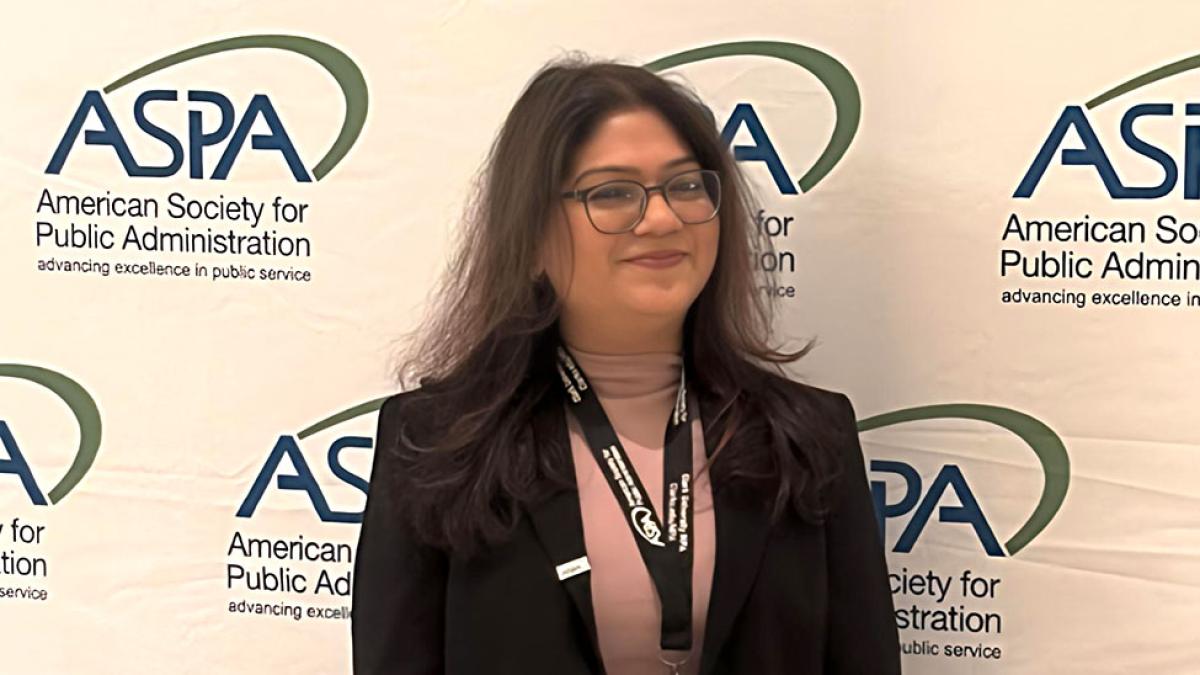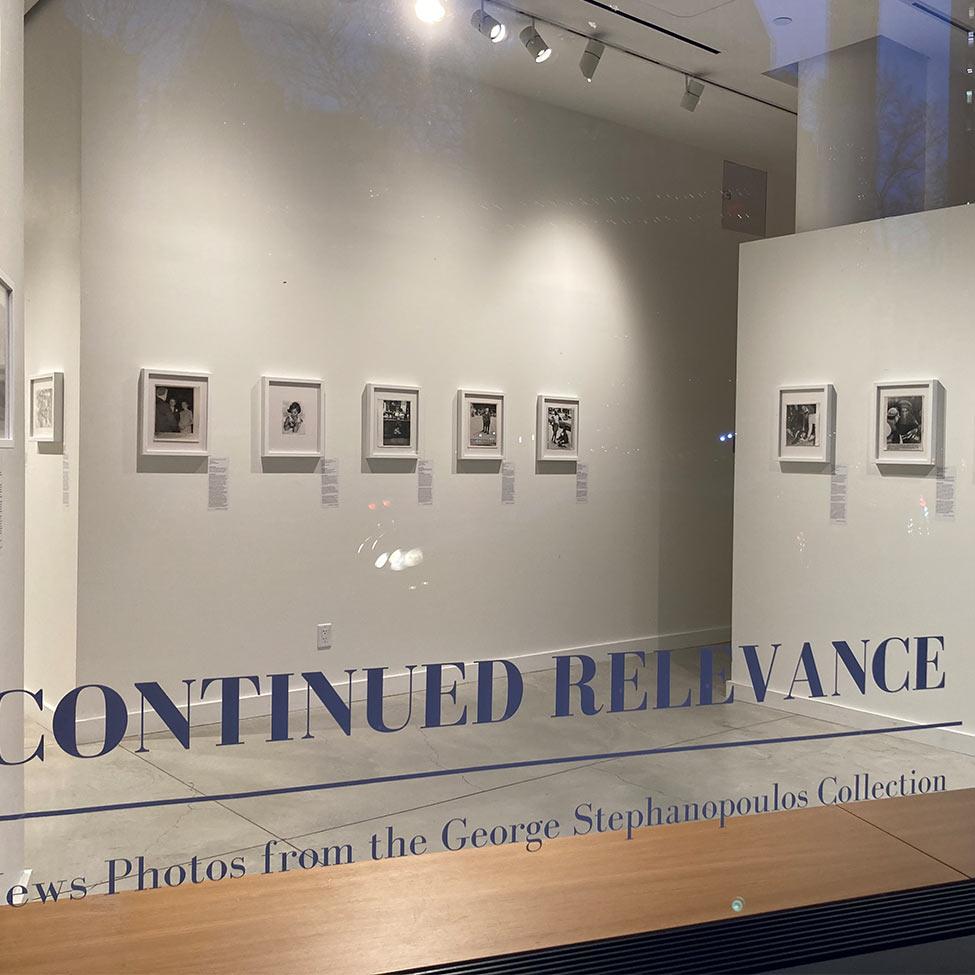
Re-reading History: Students Curate Exhibit of Historic Newspaper Photos

Imagine discovering an old shoebox brimming with memorable events from your life, a treasure trove of photographic imagery that feels like an unexpected exercise in time travel. You randomly – or maybe intentionally – pick up one photo, then another, and still another. A process has been set in motion and something is stirred: a curiosity to know more, perhaps even a revelation or breakthrough.
Now, consider being presented with thousands of photos that span two decades of key moments in the life of an entire nation, with the mission to curate a small, representative sampling for an exhibit. That exhibit is Continued Relevance: News Photos from the George Stephanopoulos Collection, which was on view at the Pace University Art Gallery on the New York City campus from November–January. And the challenge went to Dyson students enrolled in three separate courses this past fall 2022 semester.
The result of this process was a select total of 54 images, each carefully chosen by a student and displayed with their personal commentary, from a gift of more than 1,400 historic news photos from the veteran news analyst and former White House Director of Communications, George Stephanopoulos. The images were primarily taken by legendary photojournalists of the 1960s and 1970s working for major news agencies such as the Associated Press, and cover themes including the Civil Rights movement, John F. Kennedy’s presidency, the Vietnam war, and related civil rights and war activism.
The curation process
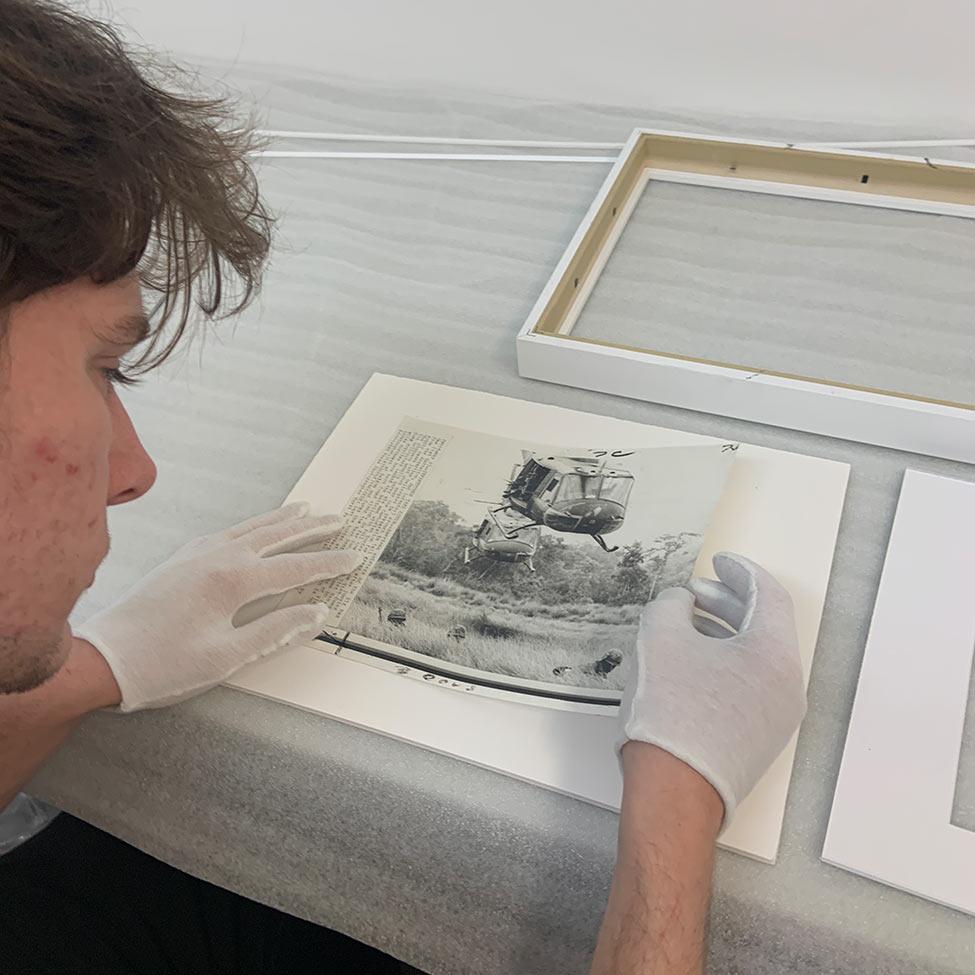
What does it mean to curate an exhibit? And through what lens or lenses does the curator’s eye behold?
Curation is not simply an editorial process; in fact, the word “curate” comes from the Latin “curar,” which means “to take care.” It is one that is not accidental, but rather, intentional, with the role of a curator carrying weight and a sense of fidelity—to the artist, the audience, and the subject matter. It was in this vein that students, under the guidance of their respective professors Sarah Cunningham, MFA, Inbal Abergil, MFA, and Emilie Zaslow, PhD, engaged in their own unique processes and explored the myriad possibilities of these images for future educational use, historical analysis, and artistic appreciation.
Caitlin Pingree ‘23, English and Communication and Media Studies, BA, who was enrolled in the Current Media in New York course, first felt overwhelmed by the number of photos to choose from, but as time went on, realized she was waiting to find something that spoke to her on not just an artistic but a sociocultural level. Ultimately, her selection was the iconic photo by Stanley Tretick of President John F. Kennedy sitting at his desk in the Oval Office with his son peeking out from under the table.
She said, “I chose this photo because I loved the dichotomy of having the older and younger Kennedy generations in the same photo. I wanted people to remember a time when there was such vitality in the White House and how different that youthful, hopeful energy is from today’s climate.”
In general, Pingree saw the collection with a very contemporary context, being drawn to images relating to youth protests, a common occurrence during those decades. According to her, it felt as though those photos could have been taken today, both due to her own generation’s activism and the issues being protested, such as racism and race-related violence.
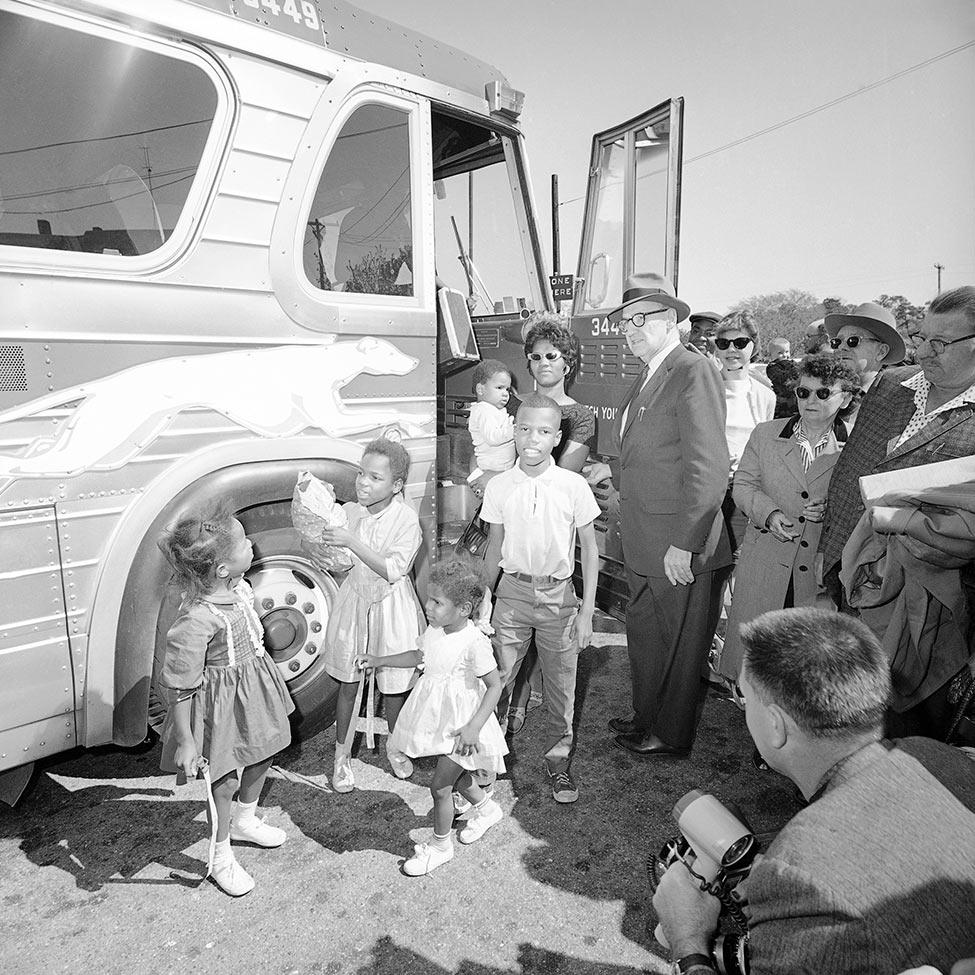
Hasan Akinyele ’23, Art, who was enrolled in a Documentary Photography course, had a slightly different approach. Gravitating mostly towards Black identities and fashion trends, he selected a photo by Frank C. Curtin entitled “Reverse Freedom Riders,” after a phrase to describe Black Southerners given bus rides by segregationist groups to northern and other states, where they were promised jobs and housing, but were often displaced in the process (a theme echoed today with migrants at the US southern border).
Noticing the details of her outfit, Akinyele was particularly drawn to Victoria Bell, the mother depicted in the photo holding her baby and surrounded by her children. When asked what he wanted viewers of the photo to come away with, he responded, “I want them to feel her humanity.”
Francisco Maldonado ‘23, Art, who was enrolled in the Introduction to Museum and Curatorial Studies course, tackled the volume of the collection by first making mental markers of photos that stood out to him aesthetically, and then, choosing in pairs, ultimately selecting through historical and aesthetic lenses. He chose the picture of the balcony of the Lorraine Motel because of its significance in the Civil Rights movement and the visual weight the flowers, an homage to Dr. Martin Luther King Jr., held in the photo.
Reflecting on life today, he feels that the photographs in Continued Relevance are less a celebration of beauty, and more a grounded example of our ever-evolving society, with justice as a common theme.
“It is distributive, procedural, retributive, and restorative. The plethora of events that happened around these photographs sparks conversations between the photos and the viewer. We only transmute our society by understanding how justice can still be found in the past,” he said.
An interdisciplinary approach
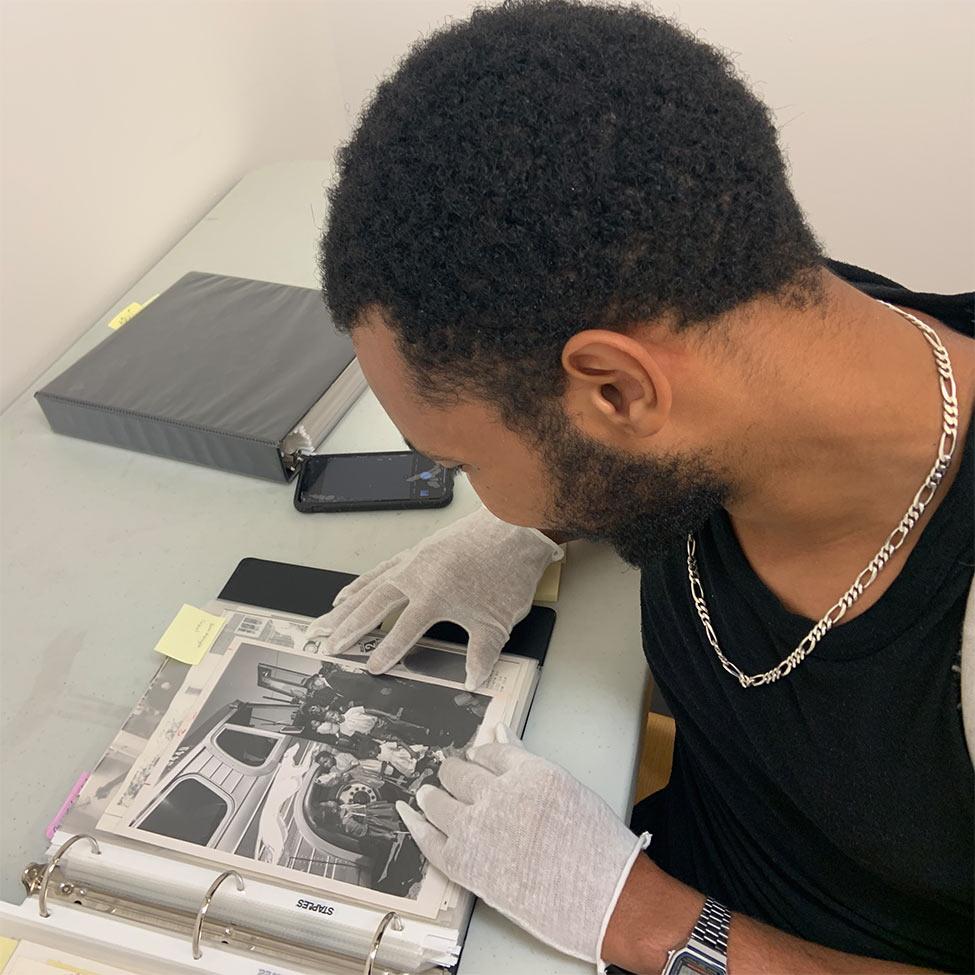
The process of curation is both an art and a science; it is also interdisciplinary in nature, and therefore reflective of Dyson’s offerings as a college of liberal arts and sciences. It is not surprising, then, that student inspiration was derived from both within and outside of their majors.
Akinyele’s process, for example, was informed by his reading of the novel, At the Dark End of the Street, by Danielle L. McGuire, in his Literature class, a reinterpretation of the story about Rosa Parks and Recy Taylor during the Civil Rights movement. As a result, with so many extraordinary stories in the world worth hearing, he has been moved in his life to talk less and listen more.
Pingree relied on her critical thinking skills, zooming in and out of images to find a deeper meaning and perspective in selecting a photo to write about. She said, “I asked myself questions such as, what is the picture communicating as a whole, or what could a specific aspect represent?”
Even mathematics and the skilled use of equations played a role in the curation process. “Based on the total selection of photos and the size of the frames, we had to calculate how many photos belong on each wall and how to evenly space them for a unified presentation,” Maldonado said.
A perfect match
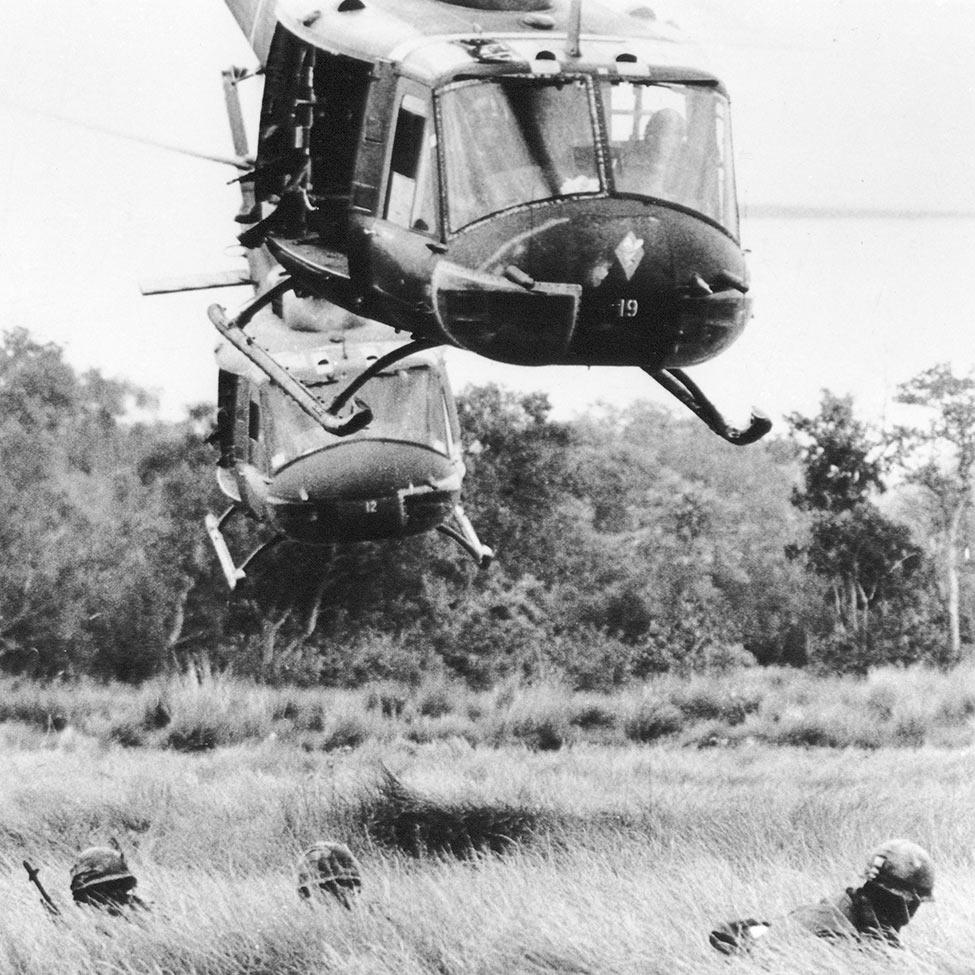
The curation of an art exhibit, and especially one of great prominence, has historically been assigned to artists, art dealers, and museum directors, another reason why Continued Relevance, which joins the Pace University Art Gallery’s impressive permanent collection, is so unique. The gallery, however, which was first established to encourage personal investigation and critical dialogue via thought-provoking art exhibits, is no stranger to both featuring student works and involving students in its exhibitions.
Its first director, Sarah Cunningham, MFA, Art Department, who is responsible for the rotation of exhibitions, managed the student image selection process, along with fellow professors Emilie Zaslow, PhD, Communication and Media Studies, and Inbal Abergil, MFA, Art Department.
As a first-hand witness to students coming to the print study room in the student exhibition lab next to the gallery and pouring carefully over the images, she was very much moved. “I really appreciated their thoroughness and curiosity. I got to know the collection more fully through their eyes,” she said.
As the university curator who manages the collection of art objects at Pace University, Kim de Beaumont, PhD, contends that Pace was an obvious choice to receive a donation of this nature and scope. She said, “It is a major university in New York City, with outstanding programs in a number of related disciplines, including media and communications, journalism, political science, art, and art history.”
A special connection between Pace President Marvin Krislov and George Stephanopoulos, however, was the icing on the cake. At a reception for Continued Relevance on December 7, 2022, Krislov revealed that he and the veteran news reporter are, in fact, old friends, having met at Oxford University in 1984, and maintaining a friendship since.
Future possibilities
Since this first showing provides only a glimpse of the total collection that has been gifted to Pace, limitless future possibilities exist.
Cunningham imagines an exhibit that focuses exclusively on an important historical moment in US history, such as the Civil Rights movement, or, alternatively, one on news-making itself, that highlights crop marks (tick marks positioned on the corners to indicate final trim) drawn with white-out and red crayon and accompanied by written notes on the back of the images.
Aptly named, Continued Relevance and other iterations from the full collection will serve as a living time capsule, offering powerful perspective on how we can learn from the past to create a better future.
